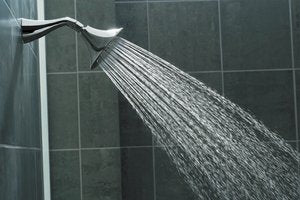If you want to make your home more environmentally friendly, then you need to consider options that will allow you to conserve water. People don’t realize how much energy it costs just to get water to their homes. By conserving this resource, you can do something good for the environment and you can save money on a regular utility bill.
“Many homeowners around the world want to reduce the energy consumption of their homes. The desire makes sense; reduced energy demands at home mean lower demand for nonrenewable, CO2-producing fossil fuels that run modern power plants” (Cunningham). If you want to make your home more environmentally friendly, then you need to consider options that will allow you to conserve water. People don’t realize how much energy it costs just to get water to their homes. By conserving this resource, you can do something good for the environment and you can save money on a regular utility bill. There are simple ways you can conserve water and you can teach them to your family as well.

Repair all Leaky Faucets
Did you know that if you have one faucet that leaks, it could be using up as much as twenty gallons of water each day? When you start adding up for weeks or months, you can see how this is a big problem. Usually, the problem is as simple as a worn out washer, and it’s easy to replace.

Use Water Efficient Shower Heads and Faucets
Taking a shower uses up gallons and gallons of water. When you choose low-flow models, they will use less than 2.5 gallons a minute, which is a big savings. Energy efficient showerheads and water faucets still provide plenty of water for showers and hand-washing, but they can save extensive amounts of water.

Be Careful How Often You Flush
Every time you flush the toilet, it uses about seven gallons of water. That’s a lot, especially if you are flushing for basically no reason. Don’t use the toilet as a place to dispose of trash. Instead, use the trash can and save water.

Always Turn the Water off when Brushing Teeth
It can be tempting to just leave the water running when you are brushing your teeth since you will be using it to rinse very soon. However, this is simply a waste and you could be using up a couple of gallons of water. Make sure you turn it off while you brush and then back on to rinse.

Always Wait Until the Dishwasher Is Full
If you run the dishwasher with partial loads, you could be wasting quite a bit of water. Instead, only run it when the machine is full. This way, you will be working the most efficiently. The same rule applies to the clothes washing machine. If your washing machine has different water level settings, remember to change this if you must wash a partial load.

Limit Shower Lengths
For every four minutes spent in the shower, you or your family will be using up 20 to 40 gallons of water. That means just spending time under the water for half an hour is wasting gallons and gallons. You need to set a time limit for anyone in the household. All showers should be limited to no more than fifteen minutes and preferably less than ten.

Insulate All Pipes
When your pipes aren’t properly insulated, then you may have to spend time running the faucet just waiting on the water to heat up. This is a big waste. All that you need to do to properly insulate pipes is buy foam insulation that is already cut with a slit running down the side. Then, you can simply fit it over exposed pipes inside and outside of your home.
There are easy steps you can take to conserve water in your home. This can make a big difference for the environment. Additionally, it will help you save money on your monthly utility bills.
Works Cited
Cunningham, M. (n.d.). Can You make Your Home More Eco-Friendly on a Budget? Retrieved October 25, 2013, from How Stuff Works at Home: http://home.howstuffworks.com/home-improvement/construction/green/home-eco-friendly-budget.htm








